The Hindu Editorial Analysis- 29th December, 2020 | Additional Study Material for UPSC PDF Download
| Table of contents |

|
| 1. Granting Bail is the Rule |

|
| 2. Easing off: Condition of Pandemic |

|
| 3. War and Words- |

|
| 4. Dealing with India’s Two-Front Challenge - China+Pakistan |

|
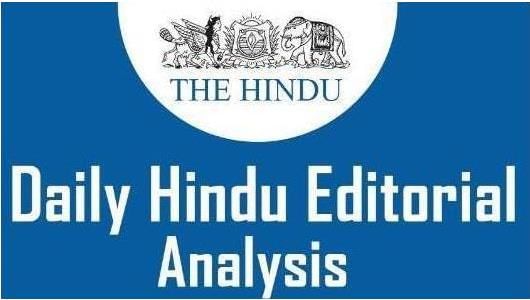
1. Granting Bail is the Rule
GS 2- Indian judicial system
Context
There are many discussion in society for jail reform. These discussions arise when cases capture public attention. There are two reform by whom the criminal justice system will be fare: Judicial sensitivity and monetary guarantor bonds
Judicial Sensitivity
- As we know that power to grant bail is the power of judges so it should be exercised liberally.
- According to the Supreme Court: “bail is the rule, jail is an exception”.
- The major purpose of bail: is to ensure the accused person’s compliance with the investigation. As well as its purpose also is to subsequent presence at the trial if they are released after arrest.
- Liberty of human: affected when the bail refused by the court and confining them in jails without trial and conviction.
- At present this power is largely used. Subordinate courts reject bail for minor excise offences also. maximum of them belong to the marginalised class.
- Without a grant of bail by the lower courts, the accused persons are required to approach the High Court or the Supreme Court.
- If we consider India's prison population: there is two thirds undertrials comprise from Dalit, Adivasi and Other Backward Classes communities. These marginalised people mainly accused of minor offences.
Impact of Pandemic
- The pendency of bail applications has particularly increased during the pandemic.
- This increased number is due to the shutting down of courts and the increase of arrests for minor offences by the police.
- According to a study: in Madhya Pradesh by the Criminal Justice and Police Accountability Project (CPAProject) of pandemic policing: despite the Supreme Court’s orders to ease crowding in prisons, arrests for minor offences continued.
Monetary Guarantor/Sponsor Bond
- According to the system of bail: sponsor/guarantor furnish a bond for some property valued at the amount determined by the concerned judge.
- Insubordinate courts: bail amount for petty offences punishable by less than three years, is a minimum of ?10,000.
- In High Courts and the Supreme Court: this amount generally exceeds ?30,000.
- For example, A 14-year-old's surety for four cases of theft and housebreaking was set at ?2 lakh by the sessions court in Bhopal.
- According to a report by Azim Premji University: Among regular wage workers, 57% of Indians earn less than ?10,000 per month.
- According to Socio Economic Caste Census: Rural landlessness is 57%, and this is higher if you are Dalit or Adivasi.
- This exploitation also receives scant attention in discussions of reform.
- According to law: the grant of bail on a personal bond is available without sureties or guarantor or release on one’s guarantee without any monetary amounts.
- Supreme court in Moti Ram v. State of Madhya Pradesh(1978): identified the issue of unreasonably high sureties as a human rights problem. In this case, the court suggests that this surety/sponsor amounts should be determined by the socioeconomic location of the accused person.
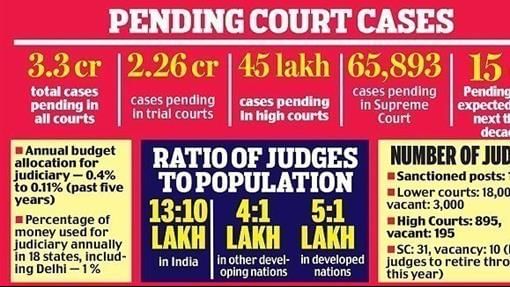
Bail Condition During Pandemic
During the lockdown, the Gwalior Bench of the M.P. High Court deemed it fit to impose specific conditions while granting bail to certain applicants.
These conditions include:
(i) Installing a non Chinese LED TV at the District Hospital,
(ii) Registration as a “voluntary COVID19 warrior”
(iii) Donating money for COVID19 relief.
While according to Principal Bench of the High Court: bail orders requiring the deposit of cash amounts is improper.
Suggestions
- Bail by judges of lower courts and High Courts have passed by with little accountability.
- The courts think very little about standards of liberty when giving orders.
- A report by the Centre for Law and Policy Research: This report recommends the creation of checklists to address individual discretion while deciding bail applications.
- The Moti Ram case's legacy has been honoured more in the breach than in its spirit.
2. Easing off: Condition of Pandemic
GS 2- Issues relating to health
Context
As the year is on the end, 2020 was one of the worst years in history due to COVID19. Pandemic affected the countries on health and economically perspectives.
Current Scenario
- Daily infections and deaths are scaling fresh peaks in Europe.
- The U.S.: is closing in on 20 million confirmed cases and 3.4 lakh deaths.
- As well as cases in some countries in Latin America have remained high and are rising.
- The case and death curves are headed further south, which is a good sign for the health infrastructure.
- No other country in the world besides the U.S. has crossed the per day peak of nearly one lakh cases that India registered in September.
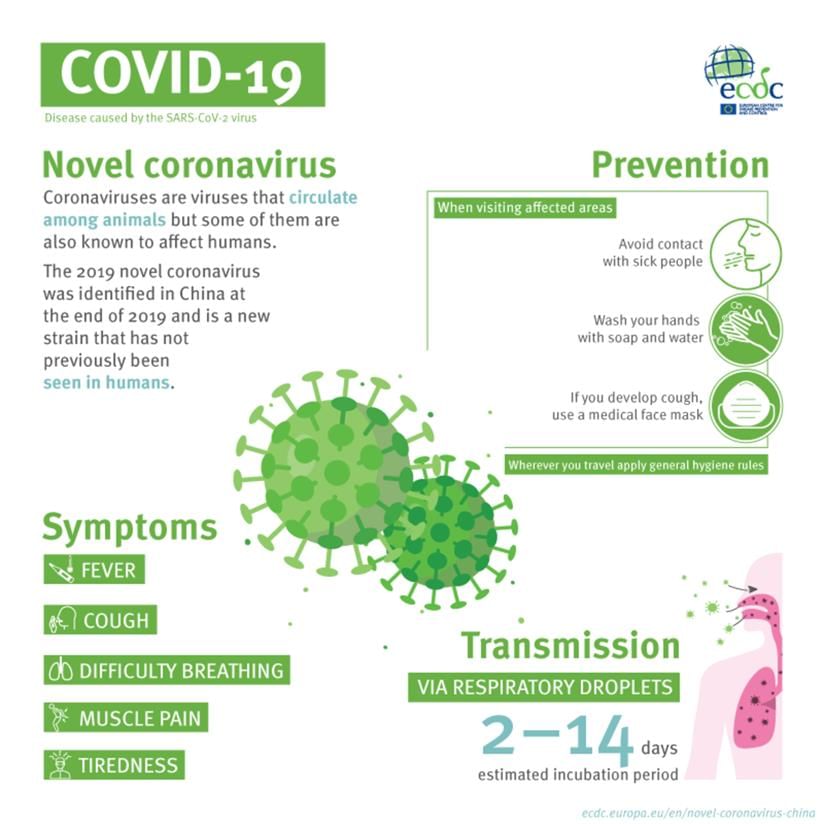
Situation of India
- As of now India still registers the highest number of daily infections and deaths in Asia.
- But now India's daily rate has come down significantly to a seven day rolling average of fewer than 24,000 cases and 250 deaths in December.
- At the time of the peak, this number was close to a lakh and more than 1,000 deaths a day in mid September.
- These are much lower numbers compared to the U.S. and larger countries in Europe and Latin America.
- If we consider the testing capacity of India, it is 732 tests and 15.8 confirmed cases per million people, compared to the rest of the world.
- In the country, the testing numbers, as well as deaths, have fallen slightly as compared to the peak in September.
Other Aspects
- In India, the lower number of cases registered recently even as:
(i) The country eased its physical distancing measures,
(ii) Eased travel restrictions,
(iii) Also went through a festive season. - But according to some virologists: the peaking in September denoted the pandemic’s widespread nature in urban and semiurban areas.
- According to them, it was reflected even more apparent in the ICMR’s serosurveys.
- The serosurveys revealed that a much higher number of undetected infections, many of them asymptomatic, before the September peak.
- The virologists estimated that nearly a third of the population had already been exposed to the virus, indicating that half of the “herd immunity” level required to end the spread had already been reached by mid September.
- So this estimation explains why daily case and fatality rates stay low.
- The estimation also suggests that after India begins its vaccination drive, the epidemic should ease further and could become endemic.
What is Serosurvey
- It is the serological survey.
- This survey involves collecting blood samples to determine if a person is infected with the coronavirus. Survey also detect if the person was infected with the virus in the past.
- As well as this survey identifies antibodies which produced to combat COVID-19.
Conclusion
So it is need of the hour to use the mask, hand hygiene, absence of crowding and renewed testing and tracing.
3. War and Words-
GS 2- Effect of policies and politics of developed and developing countries on India’s interests
Context
- Afghan government and the Taliban are preparing to resume talks in Doha next week. One of the pressing problems Afghanistan is facing remains unaddressed — the surging violence.
- The year 2020 was one of the bloodiest in Afghanistan’s 19-year-long conflict.
- It saw a U.S.-Taliban agreement in February where the Americans promised to withdraw troops in return for the insurgents’ assurance that they would not allow terrorist groups such as al-Qaeda to operate from Afghan soil.
- In September, the Afghan government and the Taliban began peace talks for the first time in Doha.
- Despite these diplomatic openings, both sides have continued their attacks.
- In the quarter that ended on September 30, violence surged by 50%,. Afghanistan also saw increased targeted killings, especially of media professionals.
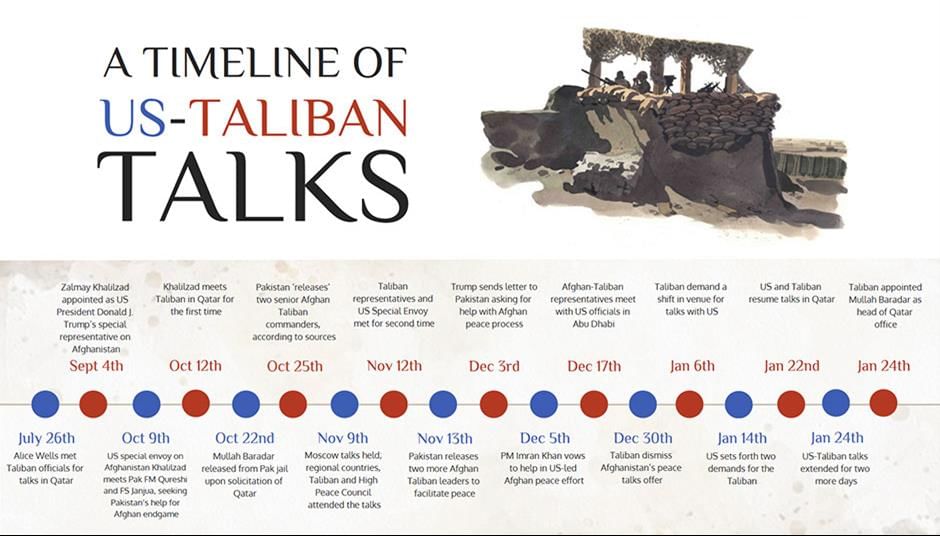
Us-Taliban Pact
US and Taliban signed an agreement for “Bringing Peace to Afghanistan”, which will enable the US and NATO to withdraw troops in the next 14 months. The pact is between the “Islamic Emirate of Afghanistan which is not recognized by the United States as a state and is known as the Taliban” and the US.
Key Elements
- Troops withdrawal: The US will draw down to 8,600 troops in 135 days and the NATO or coalition troop numbers will also be brought down, proportionately and simultaneously. And all troops will be out within 14 months.
- Taliban commitment: The main counter-terrorism commitment by the Taliban is that “Taliban will not allow any of its members, other individuals or groups, including al-Qaeda, to use the soil of Afghanistan to threaten the security of the United States and its allies”.
- Sanctions removal: UN sanctions on Taliban leaders to be removed by three months (by May 29) and US sanctions by August 27. The sanctions will be out before much progress is expected in the intra-Afghan dialogue.
- Prisoner release: The joint declaration says the US will facilitate “discussion with Taliban representatives on confidence building measures, to include determining the feasibility of releasing significant numbers of prisoners on both sides”.
- Ceasefire: Identified as another potential “trouble spot”. The agreement states ceasefire will be simply “an item on the agenda” when intra-Afghan talks start, and indicates actual ceasefire will come with the “completion” of an Afghan political agreement.
India And Taliban
- For New Delhi, too, it is a tough task ahead. India and the Taliban have had a bitter past.
- India nurses bitter memories from the IC-814 hijack in 1999, when it had to release terrorists — including Maulana Masood Azhar who founded Jaish-e-Mohammed that went on to carry out terror attacks on Parliament (2001), in Pathankot (2016) and in Pulwama (2019).
- The Taliban perceived India as a hostile country, as India had supported the anti-Taliban force Northern Alliance in the 1990s.
- India never gave diplomatic and official recognition to the Taliban when it was in power during 1996-2001.
- In recent years, as US-Taliban negotiations picked up momentum, New Delhi has been in touch with all stakeholders. But its foreign policy establishment has shied away from engaging with the Taliban directly.
New Delhi And Kabul
- India has been backing the Ghani-led government and was among very few countries to congratulate Ghani on his victory.
- India’s proximity to Ghani also drew from their shared view of cross-border terrorism emanating from Pakistan.
- The government sent Foreign Secretary Harsh Vardhan Shringla to Kabul on Friday and Saturday to meet with Ghani and the senior political leadership, while its envoy in Doha went for the US-Taliban ceremony.
- Shringla has reiterated India’s consistent support for an “independent, sovereign, democratic, pluralistic and inclusive” Afghanistan in which interests of all sections of society are preserved.
- He also conveyed India’s support for “enduring and inclusive” peace and reconciliation which is “Afghan-led, Afghan-owned and Afghan-controlled”.
- His reference to an “end to externally sponsored terrorism” is a signal that the state and non-state actors must keep Pakistan-sponsored terrorism at bay.
- To convey India’s commitment, agreements for road projects in Bamyan and Mazar-e-Sharif provinces with Indian development assistance were signed during the visit.
- Many Indian diplomats say although there has not been formal contact with top Taliban leaders, the Indian mission has a fair amount of access to the Pashtun community throughout Afghanistan through community development projects of about $3 billion.
Conclusion
- The peace talks are a complicated process. The U.S. first cut a deal with the Taliban and then arm-twisted the government to join the talks.
- Despite the divisions within Afghanistan government, the government had demanded a ceasefire, but the Taliban resisted such demands and emphasised other talking points such as prisoner swaps and the future governance system.
- As a result, violence continued even as both sides negotiated ways to end the war.
- The Trump administration, in its quest to get out of the war, failed to extract any major compromise from the Taliban when it rolled out the peace process. The insurgents, who control most of the countryside, are already upbeat.
- The next American administration should carry out an honest review of the entire peace process and push the Taliban to make concessions.
- The talks are vital to finding a lasting solution to the conflict. But it should not be on the Taliban’s terms, which could erase whatever little progress Afghanistan has made since the fall of the Taliban.
4. Dealing with India’s Two-Front Challenge - China+Pakistan
GS 2- International Relations
Context
A politically-guided doctrine and comprehensive military capability are needed to deal with the China-Pakistan threat
India's Strategy
- Historically, China has never intervened militarily in any India-Pakistan conflict and that the economic, diplomatic, and political ties between India and China rule out any armed conflict between the two countries.
- As a result, Indian strategic thinking was overwhelmingly focused on Pakistan and the security considerations emanating from there.
Intrusions Change Things
- The Chinese intrusions: Clashes between the Indian Army and the People’s Liberation Army in Ladakh, and the deadlock in negotiations. Chinese military threat is more apparent and real.
- Focus on Indian military: Even if the current India-China crisis on the border is resolved peacefully, China’s military challenge will occupy greater attention of Indian military planners in the months and years to come.
- LOC tension: Simultaneously, situation along the Line of Control (LoC) with Pakistan has been steadily deteriorating.
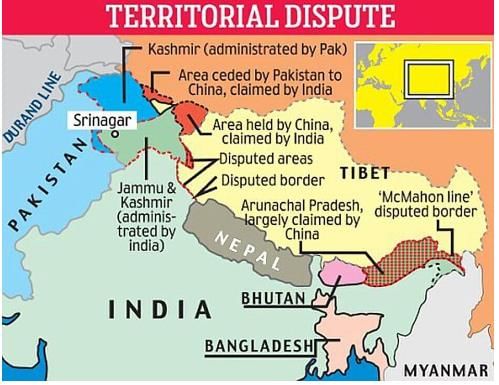
The China-Pakistan Military Links
- Similar thinking: Over the years, the ties between the two countries have strengthened and there is a great deal of alignment in their strategic thinking.
- Military cooperation: China accounts for 73% of the total arms imports of Pakistan between 2015-2019.
- Joint exercise: Improve combat capacity of both air forces substantially and also enhance interoperability between them with greater strength and harmony.
Challenge For India
Kashmir: In situation of a two-war front, there is a likelihood that Pakistan would attempt to take advantage of India’s military preoccupation by limited military actions in Jammu and Kashmir (J&K), and attempt to raise the level of militancy in Kashmir.
Dilemmas For India
A two-front conflict presents the Indian military with two dilemmas-
- Resources - Double resources are needed than what Indian Air Force has
- Strategy - If a majority of the assets of the Indian Army and the Indian Air Force are sent towards the northern border, it will require the military to rethink its strategy for the western border.
Diplomacy is Crucial
- Boost neighbourhood relations: New Delhi would do well to improve relations with its neighbours given how Beijing and Islamabad will attempt to contain and constrain India in the region.
- Strengthen West Asia ties: The government’s current engagement of the key powers in West Asia, including Iran, should be further strengthened in order to ensure energy security, increase maritime cooperation and enhance goodwill in the extended neighbourhood.
- Relations with Russia: Russia could play a key role in defusing the severity of a regional gang up against India.
- QUAD: A maritime strategy can help ease the Sino-Pakistan pressure in the continental sphere.
Outreach To Kashmir
- Political leadership: The stark military reality of a two-front challenge must serve as a wake-up call for the political leadership.
- Political outreach: A well-choreographed political outreach to Kashmir aimed at pacifying the aggrieved citizens there would go a long way towards that end. Rawalpindi can be persuaded to put an end to terrorist infiltration into Kashmir.
Way Forward
- Doctrine: Develop both the doctrine and the capability to deal with this contingency in close interaction with the political leadership.
- Capability building: Serious debate on country’s economic situation as it will not permit any significant increase in the defence Budget for the foreseeable future.
- More focus on future tech: Currently shift from major platforms such as aircraft, ships, and tankstofuture technologies such as robotics, artificial intelligence, cyber, electronic warfare, etc.
- Assessment: The right balance will have to be struck based on a detailed assessment of China and Pakistan’s war-fighting strategies.
Conclusion
- It is important to remember that China, a rising and aggressive, superpower next door, is the bigger strategic threat for India, with Pakistan being a second-order accessory to Beijing’s ‘contain India strategy’.
- New Delhi would, therefore, do well to do what it can politically to reduce the effect of a collusive Sino-Pakistan containment strategy aimed at India. It would, therefore, be prudent for India to be ready for a two-front threat.
|
21 videos|562 docs|160 tests
|
FAQs on The Hindu Editorial Analysis- 29th December, 2020 - Additional Study Material for UPSC
| 1. What is the general rule regarding granting bail? |  |
| 2. How has the pandemic affected the ease of granting bail? |  |
| 3. What does the article discuss regarding war and words? |  |
| 4. How does the article address India's two-front challenge with China and Pakistan? |  |
| 5. What is the significance of UPSC in relation to the given article? |  |















